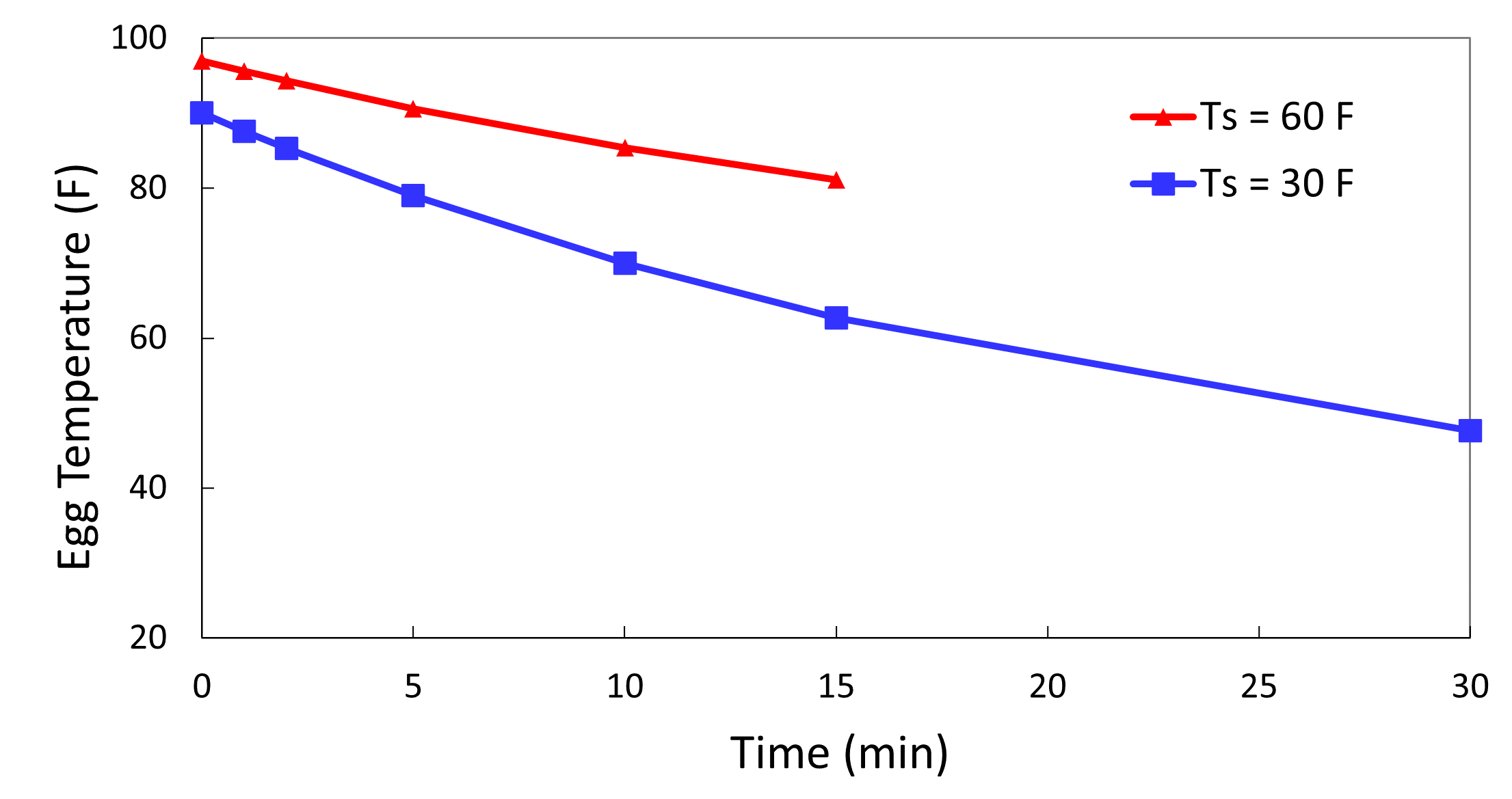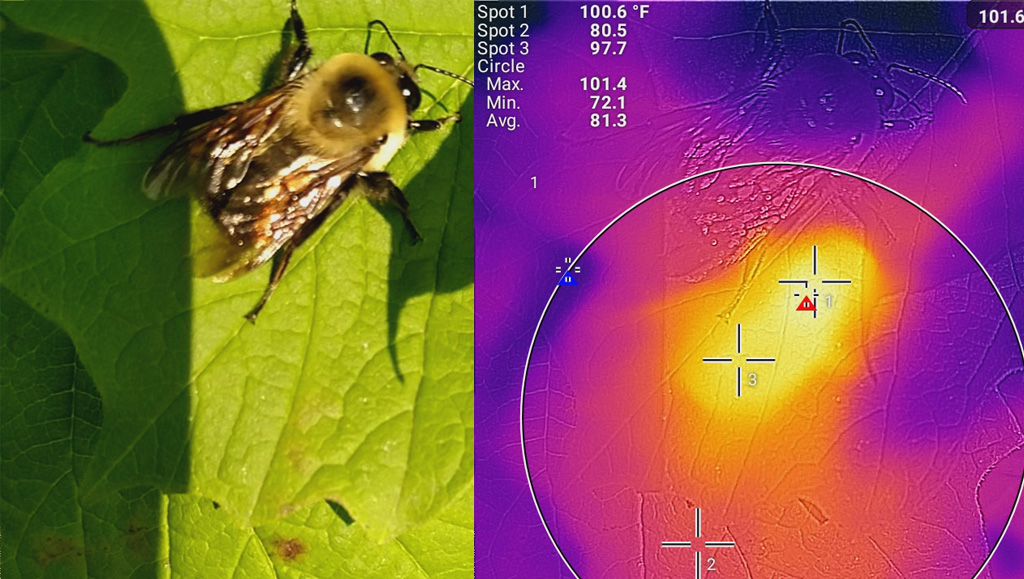


American Robins' Nest
Keeping eggs warm in the nest is challenging in early spring. The mother bird must manage her foraging time and return to the nest before the eggs cool down below a critical temperature.
The chart indicates egg cooling rates in a nest with four eggs in the month of April, where Ts is the temperature of the surrounding nest.

Carpenter Bees stay at ambient temperature when sleeping and warm up when active. We found the thorax temperatures of different carpenter bees ~ 10 C higher than the
ambient temperatures in the active state.
Read more on thermal regulation in carpenter bees
The chart shows a carpenter bee resting on a leaf
